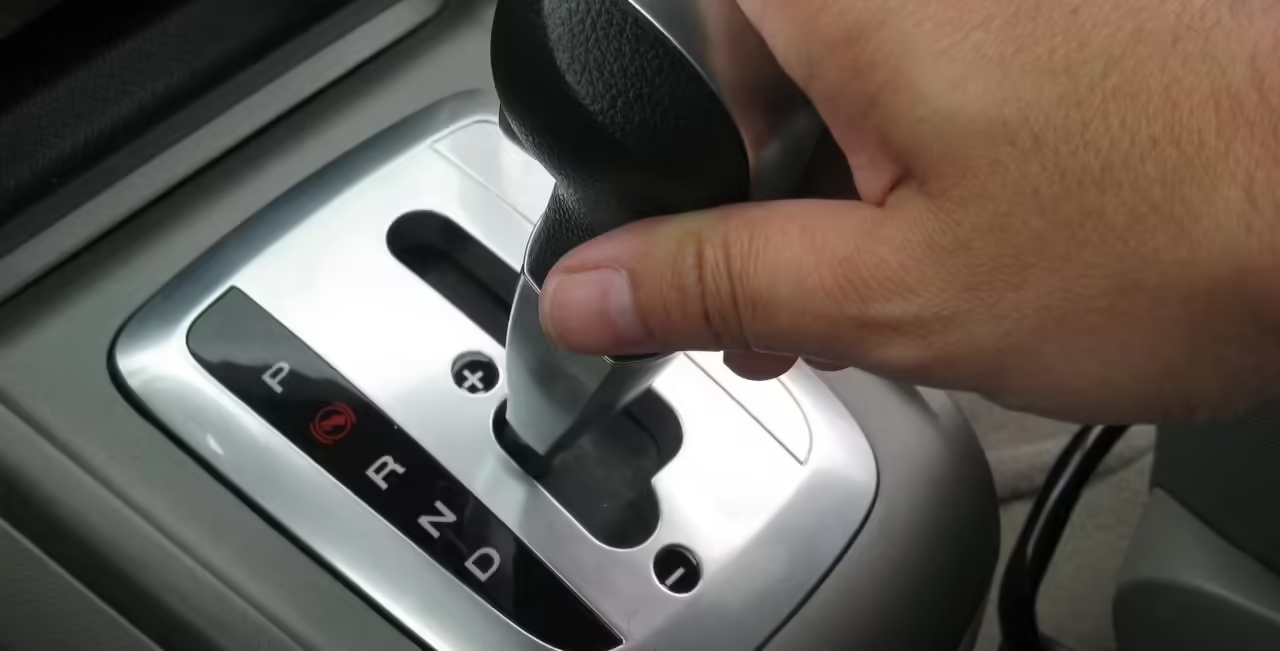
Advantages of Using an Automatic Car
The evolution of automatic vehicles has been a story of innovation and constant adaptation to the needs of drivers. Automatic cars, those equipped with a transmission that automatically adjusts to driving conditions without manual intervention, have revolutionized the driving experience since their invention.
The first viable automatic transmission was developed in the 1930s by General Motors and introduced to the public in 1940 under the name “Hydra-Matic.” This invention represented a significant advancement in the automotive industry, providing a more comfortable and easier-to-drive alternative compared to traditional manual transmissions.
During the following decades, automatic transmission technology was perfected and diversified. In the 1950s and 1960s, automatic cars began to gain popularity in the United States, where driving in urban and suburban areas required less constant intervention from the driver. In Europe and other parts of the world, adoption was slower, but eventually, the benefits of automatic cars became evident globally.
Today, automatic transmission is a standard in many automotive markets. Innovation continues with the introduction of advanced automatic transmissions, such as dual-clutch (DCT) and continuously variable (CVT) transmissions, which offer an even more efficient and smooth driving experience.
Ease of Use
One of the biggest advantages of automatic cars is their ease of use. Drivers do not need to manually shift gears, simplifying the task of driving. This is especially beneficial in heavy traffic situations or hilly terrains, where constant gear changes can be exhausting.
Comfort and Convenience
Comfort is another highlight of automatic cars. Without the need to operate the clutch and constantly change gears, drivers can enjoy a more relaxed ride. This also reduces fatigue on long journeys and improves the overall driving experience.
Increased Safety
Automatic vehicles can contribute to greater road safety. By eliminating the need to shift gears, drivers can keep both hands on the wheel and pay more attention to the road. This can reduce the likelihood of accidents caused by distractions.
Fuel Efficiency
Modern automatic transmissions, especially CVTs and DCTs, are designed to optimize fuel consumption. By continuously adjusting the transmission ratio to keep the engine in its most efficient range, these systems can improve fuel performance compared to traditional manual transmissions.
Adaptability to Various Driving Conditions
Automatic cars are particularly useful in varied driving situations. Whether in urban traffic, winding roads, or highways, the automatic transmission adapts to the conditions without driver intervention, offering a smooth and continuous driving experience.
Accessibility for All Drivers
people with disabilities or conditions that make using a manual transmission difficult, automatic cars are an inclusive option. They facilitate independence and mobility for a more diverse range of drivers.
Common Errors When Driving an Automatic Car
Automatic vehicles are known for their ease of use and comfort. However, there are certain common errors that drivers should avoid to maintain the vehicle’s good condition and ensure safe driving. Below are some of these errors and best practices to avoid them.
Shifting from ‘Drive’ to ‘Reverse’ Without Fully Stopping the Vehicle
One of the most common errors when driving an automatic car is shifting from ‘Drive’ (D) to ‘Reverse’ (R) without fully stopping the vehicle. This mistake can have serious consequences for the car’s transmission.
Consequences:
Damage to the Transmission: Shifting between these modes without stopping the vehicle can cause premature wear or significant damage to the transmission. Internal components can suffer unnecessary stress, leading to costly repairs.
Loss of Control: This abrupt change can cause the vehicle to behave unpredictably, increasing the risk of an accident.
Best Practices:
Always Fully Stop: Before shifting from ‘Drive’ to ‘Reverse’ or vice versa, ensure the vehicle is fully stopped.
Use the Brake: Keep your foot on the brake while making the shift to ensure the vehicle does not move unexpectedly.
Driving with Your Foot Constantly on the Brake
Another common error is driving with your foot constantly on the brake pedal. This habit, while it may seem like a safety measure, can actually be harmful to both the vehicle and the overall driving experience.
Consequences:
Premature Brake Wear: Keeping your foot on the brake can cause unnecessary and premature wear of the brake pads and discs.
Overheating Brakes: This habit can cause the brakes to overheat, reducing their effectiveness and increasing the risk of failure in emergency situations.
Increased Fuel Consumption: The constant resistance of the brakes can increase fuel consumption, making the vehicle less efficient.
Best Practices:
Foot on the Accelerator or Footrest: Keep your right foot on the accelerator or footrest when not actively braking.
Proper Use of the Brake: Use the brake only when necessary to stop or slow down the vehicle.
Not Using the Handbrake When Parking on a Slope
The handbrake (or parking brake) is an essential tool for securing the vehicle, especially when parking on a slope. Not using it can lead to serious problems.
Consequences:
Unintentional Movement of the Vehicle: If the handbrake is not used, the vehicle may move, causing accidents or property damage.
Stress on the Transmission: Relying solely on the transmission to hold the vehicle in place can put unnecessary pressure on internal components, causing wear and long-term damage.
Best Practices:
Always Activate the Handbrake: When parking on a slope, always activate the handbrake to secure the vehicle.
Check Safety: After activating the handbrake, release the brake pedal slowly to ensure the vehicle stays in place.
Bad Habits That Damage the Automatic Transmission
The automatic transmission is one of the most critical and complex parts of a vehicle. Maintaining its good condition is essential for the longevity of the car and ensuring a smooth and safe drive. However, certain bad habits can cause significant damage to the transmission. Below are some of these habits and best practices to avoid them.
Accelerating Before Shifting to ‘Drive’ or ‘Reverse’
Accelerating before the vehicle is fully in ‘Drive’ (D) or ‘Reverse’ (R) is a common error that can cause severe damage to the transmission.
Consequences:
Excessive Stress on the Transmission: Accelerating before the transmission is in the correct gear can cause a sudden shock to the gears, subjecting them to unnecessary stress and premature wear.
Damage to Internal Components: This habit can damage critical components such as clutches and gears, leading to costly repairs.
Best Practices:
Wait for Full Engagement: Always ensure the transmission is fully in ‘Drive’ or ‘Reverse’ before pressing the accelerator.
Smooth Transitions: Make transitions between ‘Park,’ ‘Drive,’ and ‘Reverse’ smoothly and controlled, without rushing.
Keeping the Car in ‘Drive’ When Stopped for Long Periods
Keeping the vehicle in ‘Drive’ while stopped for long periods, such as at a traffic light or in heavy traffic, can be harmful to the transmission.
Consequences:
Overheating: When the vehicle is in ‘Drive’ while stopped, the transmission remains active, which can cause overheating if maintained for a long time.
Accelerated Wear: Constant stress on the transmission while stopped in ‘Drive’ can lead to premature wear of internal components.
Best Practices:
Shift to ‘Neutral’ or ‘Park’: If you expect to be stopped for more than a minute, shift the transmission to ‘Neutral’ (N) or ‘Park’ (P) to reduce stress on the transmission.
Use the Handbrake: In prolonged traffic situations, in addition to shifting to ‘Neutral,’ activate the handbrake for added safety.
Ignoring Recommended Transmission Maintenance Intervals
Not following the recommended maintenance intervals for the transmission is a habit that can significantly shorten the transmission’s lifespan and cause serious problems.
Consequences:
Accumulation of Debris and Dirt: Over time, the transmission fluid can accumulate contaminants and lose its lubricating properties, causing damage to internal components.
Poor Performance: A transmission that does not receive regular maintenance may perform poorly, with rough or delayed gear changes.
Best Practices:
Follow Manufacturer Recommendations: Consult the owner’s manual and follow the recommended maintenance intervals for fluid changes and other transmission services.
Regular Inspections: Conduct regular inspections to ensure the transmission fluid is in good condition and at the correct levels.
Use Quality Fluids: Always use the type of transmission fluid recommended by the manufacturer to ensure the best performance and protection.
Maintenance Errors That Can Be Costly
Properly maintaining a vehicle with an automatic transmission is crucial for its optimal and long-lasting operation. However, some common maintenance errors can be very costly in the long run. Below are these errors and how to avoid them.
Not Regularly Changing the Transmission Fluid
Transmission fluid is vital for the smooth and efficient operation of the automatic transmission. Not changing it regularly can lead to a series of serious problems.
Consequences:
Accumulation of Contaminants: Over time, the transmission fluid accumulates debris and contaminants that can clog internal channels and valves.
Loss of Lubricating Properties: Old fluid loses its lubricating properties, increasing friction and wear on internal components.
Overheating: Degraded fluid cannot effectively dissipate heat, leading to transmission overheating.
Best Practices:
Follow the Manufacturer’s Maintenance Schedule: Consult the owner’s manual for the recommended change intervals and follow them strictly.
Regular Checks: Conduct regular checks of the transmission fluid’s condition and level to ensure it is in good shape.
Using the Wrong Type of Transmission Fluid
Using the wrong type of transmission fluid can cause severe and costly damage to the automatic transmission.
Consequences:
Incompatibility: Each transmission is designed to work with a specific type of fluid. Using the wrong fluid can result in inadequate lubrication and cooling.
Damage to Internal Components: Additives in the wrong fluid can react negatively with internal transmission materials, causing corrosion and premature wear.
Poor Performance: The wrong fluid can affect the overall performance of the transmission, with rough or delayed gear changes.
Best Practices:
Consult the Owner’s Manual: Ensure you use only the type of transmission fluid recommended by the vehicle manufacturer.
Check with a Professional: If you have doubts about which fluid to use, consult a certified mechanic.
Not Checking and Repairing Transmission Leaks
Ignoring transmission fluid leaks can lead to serious and costly problems.
Consequences:
Low Fluid Level: Leaks can cause the fluid level to drop significantly, leading to transmission malfunction.
Damage to the Transmission: With insufficient fluid, the transmission does not receive the necessary lubrication and cooling, which can lead to overheating and internal damage.
Increased Wear: The lack of adequate fluid can increase friction between internal components, accelerating wear.
Best Practices:
Regular Inspections: Conduct regular visual inspections to detect possible transmission fluid leaks.
Immediate Repairs: If you detect a leak, take your vehicle to a repair shop for immediate inspection and repair.
Stay Vigilant: Be alert for signs of low fluid levels, such as rough gear changes, unusual noises, or vehicle overheating.







